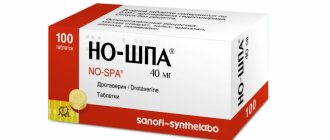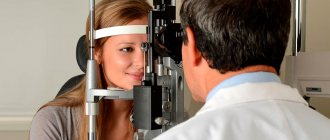01.05.2017
Last modified: December 24, 2021 at 04:01 pm
The question of how to correctly measure blood pressure is important for those people who suffer from hypertension every day. The accuracy of the definition is serious, because a person should understand whether it is necessary to use antihypertensive drugs or not.
After all, if you take medications to reduce it, you can reduce the indicators to extreme limits, which will lead to hypotension, which also has a very negative effect on the condition.
What is blood pressure (BP)?
This is the pressure with which blood presses against the wall of the arterial vessel. It consists of 2 numbers: the upper (systolic) is the pressure on the vessel wall at the moment when the heart contracts, and the lower (diastolic) when the aortic valve is closed and the heart relaxes and rests. Systolic pressure is determined by cardiac output, and diastolic pressure depends on how spasmodic or dilated the vessels are, that is, on their tone. Blood pressure up to 140/90 mmHg is considered normal. Anything higher is arterial hypertension, the most common complication of which is stroke or heart attack.
You decided to measure your blood pressure, but it turned out to be elevated. You immediately start taking pills, calling your children or calling an ambulance.
In fact, it may be normal, you just made a mistake when measuring.
First rule . Sit down, lean back in your chair, relax, place your arm bent at the elbow on the armrest or table so that it is at heart level, and place the cuff 2-3 cm above the bend. Tension and anxiety increases blood pressure by 10 mmHg. Under no circumstances should you measure blood pressure while standing or holding your arm suspended.
Secondly , it is not recommended to measure blood pressure through clothing, especially thick clothing. The cuff first compresses the clothing and only then the blood vessels, therefore blood pressure rises. Because of this, its maximum increase can be up to 40 mmHg. The thicker the clothing, the higher the blood pressure.
The third mistake when determining blood pressure is incorrect posture. You sat down, crossed your legs, it’s comfortable for you, but the vessels of the lower extremities are compressed, they narrowed, blood pressure increased by another 8-10 mmHg.
If you made all of the above mistakes, then in total this will add 50-60 mmHg to your true pressure. You think that you have high blood pressure, you are nervous, you take medications that you do not need at the moment, but it is actually normal.
Which blood pressure monitors are best to use?
For home blood pressure measurement, there are several types of devices that are available in the market: - Auscultatory method: Mercury devices, aneroid (“dial”) and electronic (“hybrid”) blood pressure devices are used simultaneously with a stethoscope.
— Electronic automated devices for measuring blood pressure at the level of the shoulder, wrist and fingers.
Electronic blood pressure monitors at shoulder level, whether semi-automatic (manual cuffs inflated by squeezing a bulb) or automatic (battery-powered or mains-powered), are preferred for self-measuring blood pressure at home. These devices are easy to use, require minimal training, and many are available at a reasonable price. Preferred blood pressure monitors are those with memory, which automatically store each measurement (with date and time) and the average of all measurements until the doctor's visit. Wrist-worn devices are less accurate and are not recommended unless brachial blood pressure measurement is impossible or very difficult. Finger devices are not recommended. Mercury blood pressure monitors require extensive training and have been banned in some countries for environmental reasons. Aneroid devices also require preparation and regular calibration. The use of these devices should be limited to patients in whom automated measurements are impossible or inaccurate. Not all home blood pressure monitors available on the market have been properly tested. Up-to-date information about device testing should be provided by your physician. Important for accurate measurements is the selection of the appropriate cuff, the size of which must fit the patient's arm. The inflatable bag of the cuff should cover 80-100% of the upper arm circumference. The use of small cuffs may lead to an overestimation of blood pressure, while the use of large cuffs may lead to an underestimation of blood pressure. Therefore, if your arm circumference is <24cm or >32cm, please ensure that the device is equipped with a small or large cuff accordingly.
How to measure blood pressure correctly?
Do not forget that the pressure must be measured silently , without talking, while in a calm state, since when talking, the muscles tense, their tone increases and blood pressure also becomes higher by 15 mmHg.
It is impossible to measure pressure with a full bladder, since blood pressure rises when holding urine. After going to the toilet - minus 15 mmHg. We also need to remember that when we are in a cold room, we add BP + 20 mmHg to the normal numbers.
Therefore, before you are going to measure your blood pressure, so that the numbers are objective, just go to the toilet, sit in a warm room, relax, lower your legs, roll up your sleeve and then your blood pressure will not be higher than 140/90 mmHg.
Taking care of your health,
In this article:
- Principle of blood pressure measurement
- Setting up the tonometer
- What is the error of an electronic tonometer?
- How to correctly measure blood pressure with an automatic tonometer
A device for measuring blood pressure is a must-have accessory for self-diagnosis, especially in the presence of hypertension and in old age. The most convenient way to take measurements at home is to use an electronic tonometer with fully automatic functionality.
Setting up the tonometer
The main condition for taking measurements at home is the correct setup of the device. Therefore, when purchasing, you need to check the contents and make sure that everything is in place. Before starting work:
- Please read the instructions for use carefully.
- Insert a working battery into the slot provided for this purpose.
- Press the power button and enter the date, time, etc., if provided by the functionality.
- After this, put the cuff on your shoulder or wrist and take several control measurements to make sure the tonometer is working properly.
If you buy a device in a store or pharmacy, then the tonometer can be checked on the spot - in this case, you will be convinced of its functionality “without leaving the cash register.” When purchasing online, a reliable way is to choose a trusted supplier. The German company Beurer is one of the leaders in the global market, and their beauty and health products have received awards at international exhibitions.
Factors distorting indicators
When favorable conditions are created, pressure readings may change. Among them the following are highlighted:
- Regular stress, physical activity, anxiety, and constipation cause an increase in blood pressure.
- Blood pressure increases after consuming foods and drinks that contain tannin and caffeine.
- Alcohol-containing substances uncontrollably expand and narrow arterial passages and disrupt general hemodynamics.
- Sharp jumps in blood pressure are observed when air and water temperatures are too high or too low.
Video on the topic
Since the results of measuring blood pressure with a tonometer at different times of the day can differ dramatically, you need to choose a specific time at which to measure it daily. It is advisable to do this several times a day at intervals of a quarter of an hour. The average is the most reliable. If the pressure level is too high over a certain period of time, then you must immediately contact a qualified specialist to determine the reasons for such high levels.
This point should not be ignored, as it may be a sign of a terrible disease of the cardiovascular system. In this case, you need to immediately conduct an appropriate examination to determine the state of the body and identify the true reasons that influenced the deterioration of health. You should not delay going to the doctor, so as not to complicate the situation even more.
Blood pressure levels differ with changes in body position
How to measure blood pressure while sitting or lying down is decided independently by the person and his attending physician. The main thing is that regular procedures should be performed in the same position of the body. The procedure is carried out at the same time of day, in the same position. A sharp change in blood pressure when changing body position is usually called orthostatic hypertension, which is observed:
- for diabetes mellitus;
- in old age;
- with regular use of vasodilator drugs.
In such patients, it is customary to carry out serial measurements with a tonometer every 1–3 minutes. The final value is equal to the average of the derived values. For persistently high or low blood pressure levels over a long period of time, medical assistance is strictly indicated. In a hospital setting, the patient is prescribed an examination, during which the causes of hypotension or hypertension are determined.
Important! Delaying a visit to a specialist can lead to an exacerbation of a progressive disease and the manifestation of unwanted complications.
People with a history of illness or pathology of the cardiovascular system should regularly monitor blood pressure values. In this way, the development of life-threatening diseases is prevented, in particular, heart attack, stroke, and timely measures are taken to stop them.
Features of measuring pressure in a lying position
In medical practice, two positions are most often used to measure blood pressure: in a sitting position and in a lying position.
As a rule, a person’s posture itself has little effect on the tonometer’s readings; the main role is given to the location of the shoulder or hip on which the measurement is made. But preference when measuring is given to a sitting position, if possible. If the patient is in serious condition or is unable to sit down, measurements are taken when he is in a lying or semi-sitting position. Measurements are not taken while standing.
https://www.youtube.com/watch?v=i67OAe1HVzU
For the most accurate results, when measuring pressure, the patient must sit on a chair with a backrest for maximum relaxation, the elbow surface should be on a soft pillow, approximately at the same level as the heart. The hand should be freed from clothing.
When taking measurements, you should not talk, make sudden movements, strain parts of the body, or cross your legs. You should not smoke, drink alcohol or exercise before the procedure.
Also a necessary condition is relaxation of the hand and the whole body. That is why it is not recommended to measure pressure in a standing position due to the fact that the patient will not be able to completely relax. If it is impossible to measure in a sitting position, then measurements are taken with the patient lying on his back, with the cuff placed on the thigh (more often in children) or shoulder.
Blood pressure measurement consists of three consecutive measurements with an interval of 10 minutes, from which the arithmetic average is calculated, which will be the most accurate indicator of the pressure level. It is necessary to take measurements on both hands, as the values may vary.
Pressure readings can be influenced by various factors:
- stress;
- anxiety;
- excitement;
- physical exercise;
- Times of Day;
- caffeinated foods and drinks;
- alcohol;
- smoking.
All these factors affect the lumen of blood vessels, so they must be taken into account when measuring blood pressure.
Pressure measurement in bedridden patients is carried out in a horizontal position: supine or semi-sitting (if possible).
The hand is located at heart level, but not overhead. Three measurements are made and the arithmetic mean is calculated. As a rule, people have lower blood pressure when lying down than when sitting, which is associated with greater relaxation of the body.
When changing position from lying to sitting, an increase in blood pressure is observed, followed by its normalization. Stabilization of pressure in the body of a patient with hypertension occurs more slowly.
If there is no timely treatment, the disease can progress rapidly, which is dangerous with a number of complications. To monitor its progress, it is necessary to systematically monitor the state of blood pressure, which will help to quickly take measures to prevent deterioration in health.
Blood pressure can be measured not only in medical institutions, but also at home if you have a special meter - a tonometer. How to measure blood status correctly, and is it possible to measure blood pressure while lying down, or is it better to do it in a sitting position?
In medicine, a generally established rule is to measure pressure when a person sits on a chair, leaning on its back. With a hunched or other incorrect posture, blood pressure may increase, but when a person is in a sitting position with stable back support, his body relaxes as much as possible, which makes it possible to more accurately determine the state of blood pressure.
In a lying position
When the condition of a hypertensive patient is very painful and he is unable to take a sitting position, the pressure is measured in a supine position. In this situation, the patient's arm should be located along the body at the same level as the heart.
In a standing pose
Doctors do not recommend that patients take blood pressure measurements in a standing position, since such a position does not allow a person (especially if they feel unwell) to relax as much as possible, which significantly affects the tonometer readings.
Why is my blood pressure lower when lying down than when sitting? In answering this question, experts emphasize that when sitting and lying down, the mechanism of blood supply to internal organs is completely different. Therefore, each position has its own pressure - when the position of the body changes, the blood pressure also changes.
For example, if a patient sat for a long time and then stood up, blood pressure drops sharply due to the outflow of blood fluid from the brain, and then begins to rise to its natural value. However, in a healthy person, the difference in blood pressure is not significant, but with hypertension in a lying state, the pressure will be much lower than when the patient is sitting.
The final result of blood pressure measurement is also influenced by the time of day, and even the person’s posture itself at the time of the measurement procedure. Why is this happening? This difference is explained by the fact that throughout the day the blood pressure in the arterial vessels can change dramatically. Based on this, before measuring blood pressure, you need to pay attention to what time it is, since the pressure value may be higher or lower in a certain period of the day. The human body is constantly tied to biorhythms, which at some point in time are identical to the environment.
| Times of Day | Changes occurring in the body |
| Early morning | The man woke up early in the morning and is still lying in bed, but his blood pressure is already starting to rise |
| Day | During the day, morning blood pressure parameters decrease slightly |
| Evening | In the evening the pressure begins to increase slightly |
| Night | During night sleep, the lowest level of pressure in arterial vessels is observed. This decrease is explained by the fact that the human body is already in a lying position and the body is as relaxed as possible |
A counter question arises: why then at the moment of awakening, that is, in the morning, does the pressure rise quickly? The difference in pressure between lying and sitting is explained by the fact that when the body is located in a horizontal position, the blood flow to the heart accelerates than when standing. Immediately after waking up, the human body switches from a calm, relaxed state to active actions, that is, all internal processes of systems and organs begin to work in a more energetic mode.
With each subsequent decade, the normal pressure figure increases by 3 mm Hg. Art. Pathology is:
- Low blood pressure – readings less than 100/60 mm Hg. Art.
- High blood pressure – above 130/80 mmHg. Art.
Today, you can determine blood pressure levels using a measuring device both while sitting and lying down. In principle, it is not the body posture itself that plays an important role, but the position of the hand on which the procedure will be performed.
Preparation
Before measuring blood pressure, a person should rest (sit or lie down) for 10-15 minutes and be sure to take five deep breaths. Why is this necessary? Such breathing exercises help normalize the pulse rhythm, which is important when measuring blood pressure.
The reliability of the tonometer readings is also affected by the temperature in the room, so it should not be lower than 20 degrees. Cooler air can lead to a jump in blood pressure.
1.5 hours before establishing blood pressure, you should not smoke, drink coffee or alcohol, as these addictions can affect the final reading and the measurement results will not be accurate.
You cannot measure pressure with a full bladder. The patient must empty it before the procedure.
If an electric tonometer is used to measure blood pressure, you must remove your mobile phone from your clothing pocket and place it away from the device.
Before measuring the pressure while lying down, a soft pad is placed under the elbow, and the arm itself should be located along the body and slightly raised to a level that corresponds to the middle of the chest.
Immediately at the moment of measurement, it is prohibited to talk and move, lean to the side, forward, etc., and breathing should be calm and measured. When directly determining blood pressure parameters, you should not cross your legs.
The results of the readings on both arms may vary, therefore, to establish a reliable blood pressure level, the measurement is initially performed on both limbs, and then carried out on the arm on which the higher level shows.
It is recommended to determine the pressure 3 times with an interval of 10 minutes, which allows you to accurately determine its parameters. From the three results obtained, the average is calculated, which will be the most correct.
If measurements are performed in a series, the position of the body must be changed periodically, and in the intervals between them the tonometer cuff must be slightly loosened.
- When using a shoulder tonometer, the cuff is put on so that its lower edge is 2 cm higher from the bend of the elbow, and it should fit the shoulder area of the arm quite tightly, but not too tightly.
- If a wrist model is used, it is placed on the wrist so that the thumb faces up.
In this situation, the position in which pressure is most often measured is also of no small importance. If a person lies down during the measurement, the tonometer will show lower readings compared to a sitting position, that is, the result will be different. To obtain more accurate results, a sitting position is preferable.
- the difference in pressure between the arms can be quite significant, so it is recommended to measure on the arm with higher blood pressure values;
- 30 minutes before measurement it is necessary to avoid eating, smoking, physical stress and exposure to cold;
- before measuring pressure, you need to sit quietly or lie down (depending on the chosen body position in which the measurement will be taken) and relax;
- measurement begins 5 minutes after resting in the above position;
- When measuring blood pressure in a sitting position, the back should be supported, since any form of isometric exercise causes an immediate increase in blood pressure. The midpoint of the shoulder should be at the level of the heart (4th intercostal space);
- in a lying position, the arm should be located along the body and slightly raised to a level corresponding to the middle of the chest (a small pillow can be placed under the shoulder and elbow);
- During the measurement, you cannot talk or make sudden movements;
- It is advisable to measure pressure three times at intervals of 5-10 minutes. to restore blood circulation in the hand.
- if a series of measurements is carried out, it is recommended to change the initial position;
- During pauses between measurements, it is advisable to loosen the cuff.
| Blood pressure category* | Systolic (upper) blood pressure mm Hg. Art. | Diastolic (lower) blood pressure mm Hg. Art. |
| Norm | ||
| Optimal** | Less than 120 | Less than 80 |
| Normal | Less than 130 | Less than 85 |
| Increased normal | 130-139 | 85-89 |
| Hypertension | ||
| 1st degree (soft) | 140-159 | 90-99 |
| 2nd degree (moderate) | 160-179 | 100-109 |
| 3rd degree (severe) | More than 180 | More than 110 |
| border | 140-149 | Less than 90 |
| Isolated systolic hypertension | More than 140 | Less than 90 |
Factors that can distort the results
| Reasons influencing the inaccuracy of measurement results | How exactly is it violated? |
| Stressful situations, anxiety, anxiety and intense physical activity, as well as constipation | Increase blood pressure |
| Drinks and foods with caffeine and tannin | Significantly increases blood pressure |
| Extremely high or low air or water temperatures | A hot shower or bath, hot or cold weather contribute to the dilation or constriction of blood vessels, which also provokes a sharp increase or decrease in blood pressure |
| Alcoholic drinks and smoking | They have the ability to narrow and expand the lumen of the arteries, thereby disrupting hemodynamics |
| Electrical impulses of devices | They interfere with the correct operation of the automatic electronic tonometer; as a result, the measurement result will be incorrect |









